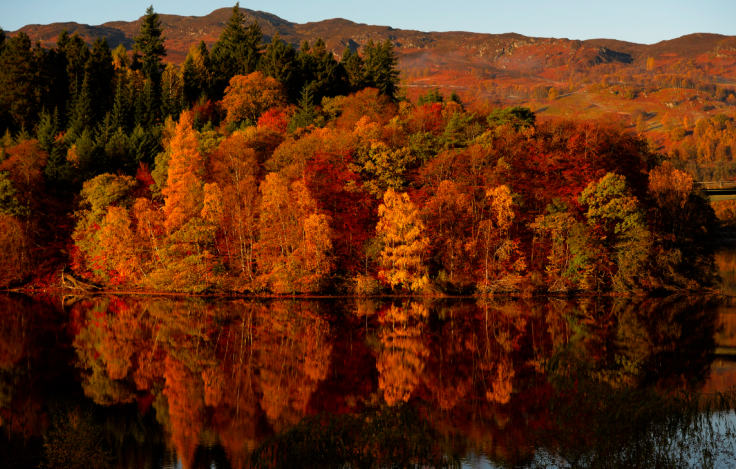Science Behind Why Trees Lose Their Leaves, Change Color During Fall

Fall officially started in September on the autumn equinox but the true signs of the season change weren’t seen until a few weeks later when the leaves started to change across the country. The warm inviting colors of fall are one of the true markers that the summer has passed and we’re heading for winter.
But before snow starts to fall and the trees are barren for months, their leaves change color in one last display until springtime comes. But why exactly does this happen? It has to do with the changes in sunlight as fall arrives in full and the chlorophyll trees produce.
This year has been a warmer fall than usual with the month of September seeing temperatures well above the average making it the third warmest on record, according to the National oceanic and Atmospheric Administration. This is why the leaves have been slow to change colors in some areas of the country.
Trees display green colors in the spring and summer months because they’re producing high levels of chlorophyll during that time thanks to the usual abundance of sunlight. The chlorophyll is key for the process of photosynthesis, which is how trees turn sunlight into energy, according to NOAA. When there is strong summer light, the trees continue to make that chlorophyll and keep their vibrant green color.
It’s not until the sunlight starts to dissipate as days get shorter and the environment changes that the trees begin to cut down on chlorophyll production and the green color fades giving way to the bright reds, yellows and oranges we associate with fall. There are other chemical changes that happen at the same time as well. Different chemicals in the leaves are responsible for the different colors we see, xanthophylls for example cause the yellows, while carotenoids cause the oranges and anthocyanins bring out the vivid reds. When the green caused by the chlorophyll fades, the other colors are left.
The changes in the weather that the autumn months bring can also play a role in when the leaves change. In addition to sunlight and temperature, variables like precipitation and frost can also impact the abundance of color and how long the leaves stick around. An early frost can cause the leaves to fall off the trees prematurely as could a drought, according to NOAA.
The leaves begin to fall from the trees when a thin layer of cells that connects the stem of the leaves to the twig or the branch of the tree stops water and nutrients from entering the leaf from the rest of the tree. When this happens that connection get dried out and decomposes. The connection becomes more and more brittle until the leaves all fall, which is why strong winds and sometimes rains can wipe a tree out of all its autumn-colored leaves.
If you’re hoping to take in some autumn views over the next few weeks, you might want to check online foliage maps to see where the best viewing spots in your area are. The Weather Channel has a map that spans the entire United States and shows whether an area is “patchy,” “near peak,” “peak” or “past peak.”
© Copyright IBTimes 2024. All rights reserved.





















